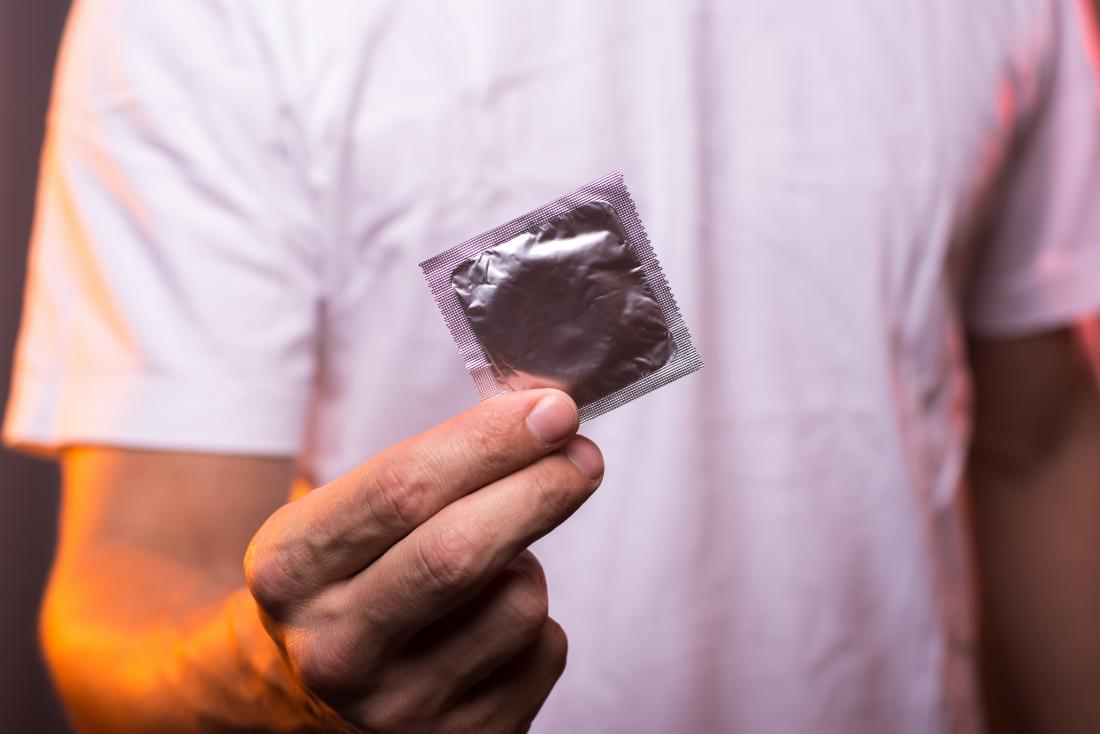Even with the best form of protection, it is always possible that sexual intercourse can result in an unintended pregnancy.
In this article, we discuss precum and the risk of getting pregnant from this preejaculate fluid.
What is precum?

Semen may leak into precum.
Before ejaculating, the penis releases fluid that people many call precum, or preejaculate. Precum comes out involuntarily before ejaculation. The fluid is partially for lubrication.
Although the fluid itself does not normally contain semen, a male’s reproductive organs may leak some semen into the fluid.
Since sperm can stay in the urethra, urinating before having sex may reduce the chance that semen will mix with the precum.
Is it possible to get pregnant from precum?
It is possible to get pregnant from preejaculate fluid.
Precum itself is a lubricant, but that does not mean that it cannot transport semen or sperm from the penis to the vagina.
Precum is also not voluntary. This means that a male cannot stop or control when they release it, though they may be able to control when they ejaculate.
When having sexual intercourse without using contraception, precum can enter the vagina carrying sperm. Neither party will notice this.
A study on the sperm content of preejaculatory fluid revealed that a significant amount of males had motile sperm in the samples they provided. A total of 11 of the 27 males had sperm in the preejaculate fluid, and 10 of those males had motile sperm in the sample.
Another study found that 16.7% of healthy males had motile sperm in their preejaculate.
Is the pull-out method effective?
Compared with other birth control methods, the pull-out method is not as effective. According to the Centers for Disease Control and Prevention (CDC), the pull-out method has a failure rate of around 22%.
However, it does have some advantages that make people want to use it as a form of birth control. For example:
- it is free
- it requires no preparation
- no trip to a clinic or store is necessary
- no hormone changes will occur
- it requires no prescription
- people can do it spontaneously
It is important to keep in mind that no birth control method is perfect. They all have a chance of unintended pregnancy. However, the pull-out method has a higher chance.
In fact, using the pull-out method, 22% of women having regular sexual intercourse will become pregnant within a year.
With typical use, 18% of women will become pregnant within a year when using male condoms as a birth control method. Similarly, 21% of women will become pregnant when using female condoms as birth control. Using spermicides, 28% of women will become pregnant within a year of use.
However, the rates of pregnancy are much lower if people use birth control methods correctly.
So, the pull-out method is about as effective as condoms if a person does it correctly. Pulling out is also more effective than using spermicides. It is also more effective than not using any method at all, which results in 85% of women who have regular sexual intercourse becoming pregnant within a year.
Still, in comparison with other methods, the pull-out method is not as effective. For example, 8% of women who use the pill will become pregnant within a year. A diaphragm will result in 12% of women becoming pregnant within a year.
Among women who use an implantation such as Depo-Provera, 6% will become pregnant within a year. Finally, if the male has had sterilization, 0.15% of women will become pregnant within a year.
What to remember about the pull-out method

A person should practice the pull-out method with a condom.
Some things to keep in mind before trying the pull-out method include:
- It is not necessarily easy to do, and people should practice it with a condom.
- The male may not know or be unable to control when they are going to ejaculate.
- Pulling out will not prevent the spread or contraction of sexually transmitted diseases.
- Have an idea of the woman’s cycle and how likely they are to be ovulating may increase effectiveness.
- Have a backup plan or emergency contraceptive.
It is important for sexual partners to communicate before trying the pull-out method. If either party is not confident with the method, they should choose a different type of birth control.
People may also want to consider using both condoms and the pull-out method. This can help prevent sperm from entering the vagina, even if the male has withdrawn fully. It can also help prevent precum from entering the vagina.
Using both methods also helps protect people if the condom breaks.
Summary
Precum can transport sperm into the vagina. Because any live sperm can fertilize an egg, it is possible to become pregnant from precum.
Despite this risk, when a person does it correctly, the pull-out method works about as well as condoms in preventing pregnancy.
It is always a good idea to have emergency contraceptives on hand when sexually active to avoid unintended pregnancy.
